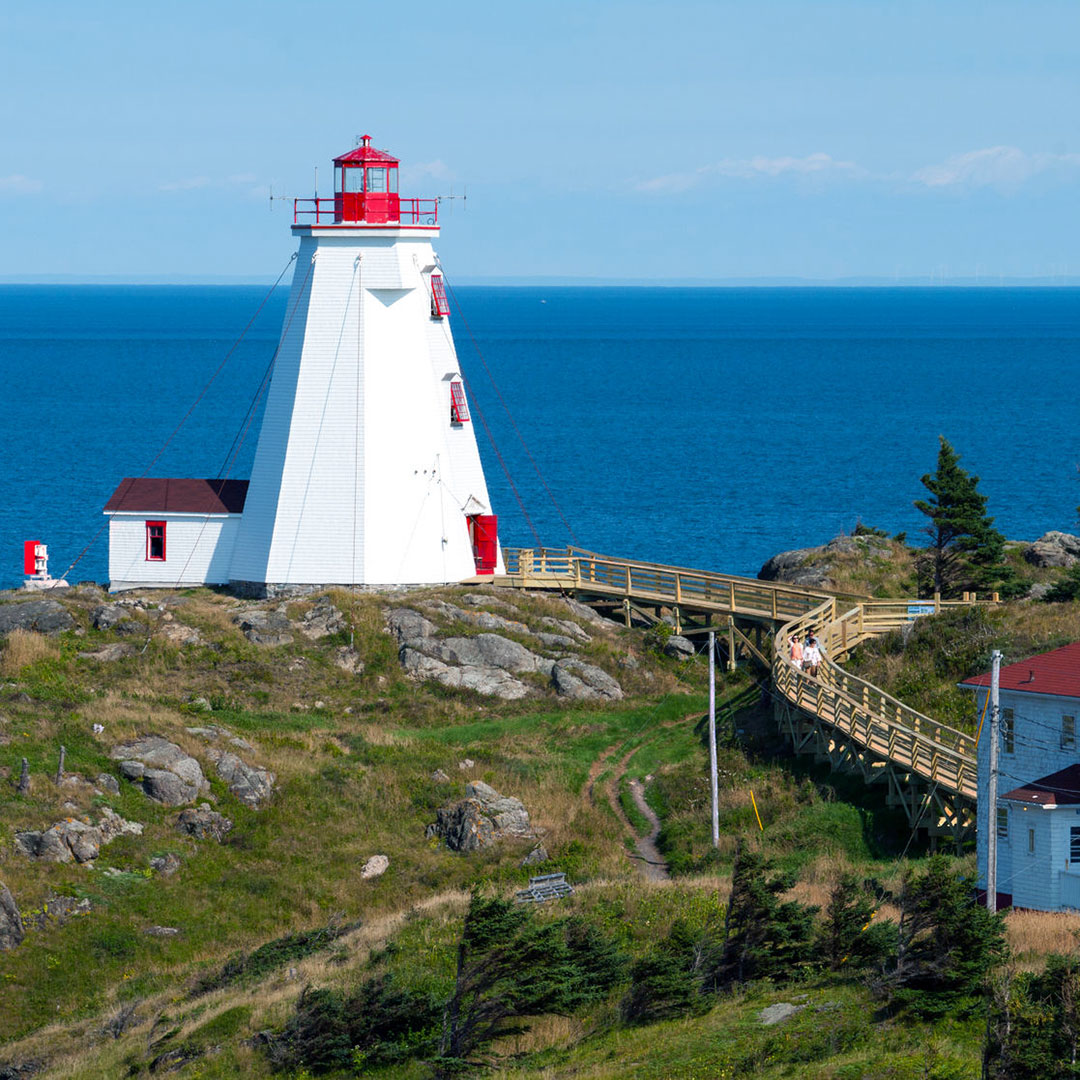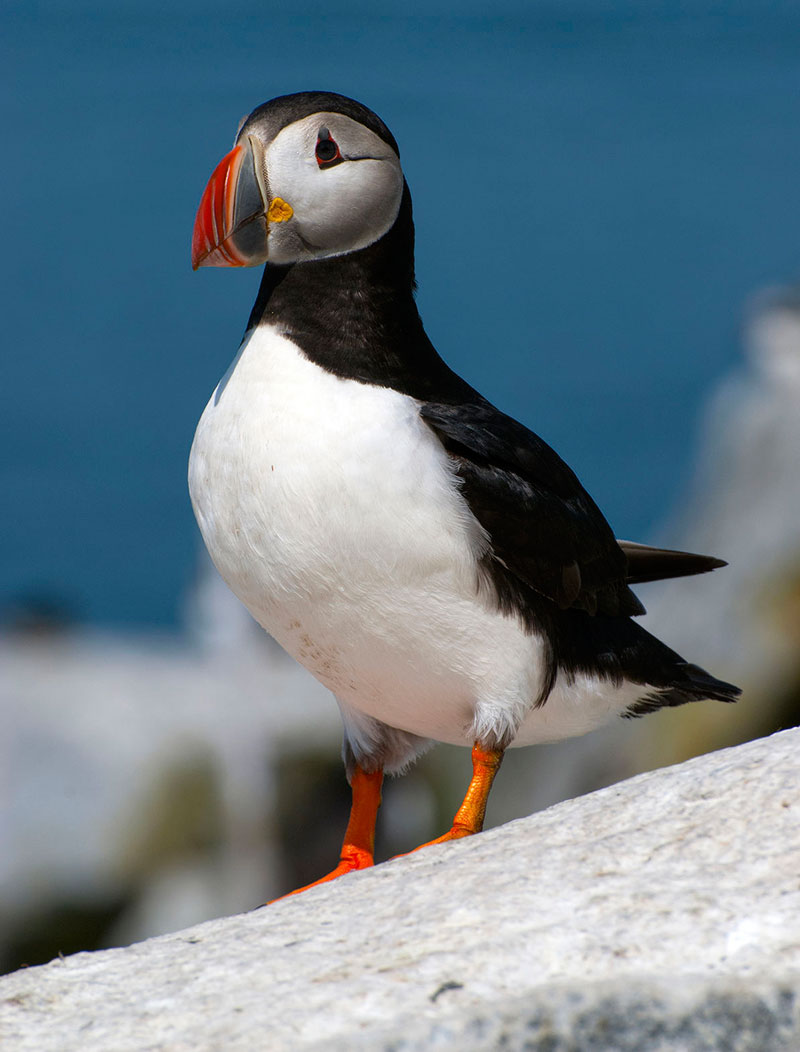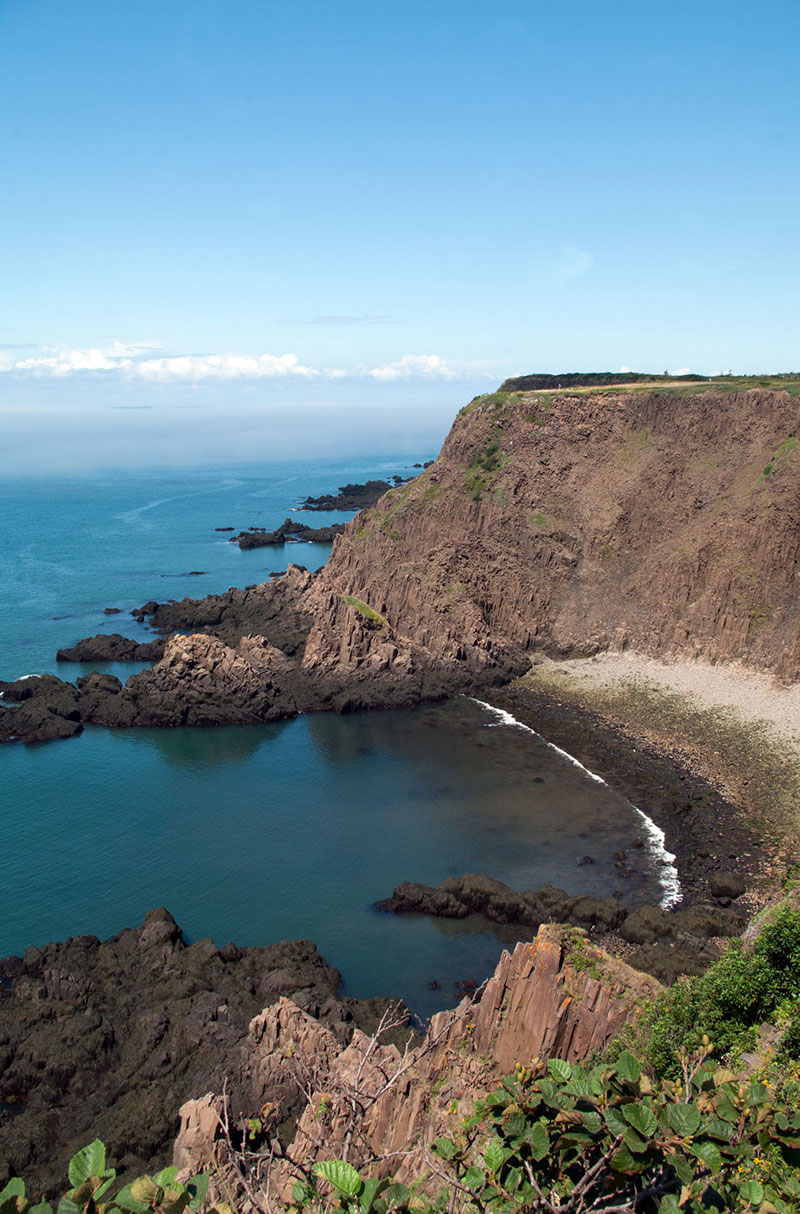Visiting Grand Manan Island
As the Fundy Isles’ largest and most southerly island, Grand Manan (pop. 2,700) gets the brunt of the mighty Fundy high tide. Pity the centuries of ships that have been caught in the currents during malevolent storms. Near the island, shipwrecks litter the seafloor and pay homage to the tide’s merciless power.

The most photogenic of the island’s four lighthouses is Swallowtail Lighthouse, which can be seen atop North Head as you approach the island by ferry. Illuminating the sea lanes and warning ships off the island’s shoals since 1860, Swallowtail and its surrounding grassy headland provide a wonderful introduction to the island.
Apart from the surging tide, Grand Manan is blissfully peaceful. White, pink, and purple lupines and dusty pink wild roses nod with the summer breezes. Windswept spruce, fir, and birch shade the woodland pockets. Amethyst and agate are mixed with pebbles on the beaches at Whale Cove, Red Point, and White Head Island offshore. Dulse, a nutritious purple seaweed rich in iodine and iron, washes in at Dark Harbour on the western coast, and islanders dry and package the briny snack for worldwide consumption.
Offshore, every species of marine life known to the Bay of Fundy congregates in the bay’s nutrient-rich mouth. Whales in pursuit of herring schools swim in on incoming currents, cavorting in the tempestuous seas—the right, finback, humpback, and minke whales are at their most numerous when the plankton blooms, mid-July through September.

Bird-Watching on Grand Manan Island
Birds of almost 350 species flutter everywhere in season, and each species has a place on this rock in the sea. Seabirds and waterfowl nest at the Castalia Marsh on the island’s eastern side. Ducks and geese by the thousands inhabit the Anchorage Beach area, where a wet-heath bird sanctuary is speckled with ponds that attract may other species, including great blue herons. Expect to see bald eagles and other raptors on the southern cliffs from mid-August through November. The eider, storm petrel, and Atlantic puffin prefer offshore islets.
Bird populations are thickest from early April through June and late summer to autumn. A great way to see the birds is by hiking one of the 18 trails (totaling 70 kilometers) that crisscross the headland. Many wind through bird sanctuaries. Another incredible place for bird-watching is Machias Seal Island, the outermost bird sanctuary island. Boat tours, restricted to a limited number of passengers, depart Grand Manan to see the archipelago’s highest concentration of exotic bird species, including razorbill auks, arctic terns, and 900 pairs of nesting Atlantic puffins.
Tours
While you can take whale- and bird-watching trips from St. Andrews, Grand Manan is where serious nature lovers base themselves. Space is limited and is always in demand on the following tours, so make reservations.
One of the finest, most well-established sightseeing outfits in town is Sea Watch Tours (North Head, 506/662-8552), which runs tour boats ($115 for a six-hour trip) to Machias Seal Island late June-early August. Whale-watching tours ($65) are scheduled July-September.

Accommodations and Camping
Though lodgings can be found across the island, it’s smart to book ahead. Compass Rose (83 Route 776, North Head, 506/662-3563, mid-April-Oct.; $99-165 s or d) sits atop a headland on the edge of North Head. Its six comfortable guest rooms are spread through two buildings, one of which was the island’s original post office. Breakfast (included in the rates) is served in a sunny dining room, and seafood-oriented dinners are available with advance notice. The inn is operated by a local tour company, so this is the place to stay if you are planning on kayaking or biking while on the island.
Also recommended at North Head is Inn at Whale Cove Cottages (120 Whistle Rd., 506/662-3181, June-mid-Oct.; $140-180 s, $150-180 d) which combines three guest rooms in a renovated 1816 residence and five cabins with a restaurant open daily for dinner through the summer season. The rooms each have private bathrooms and frilly fabrics and wallpaper, while the cottages are self-contained, including the Willa Carter Cottage, perched on an oceanfront cliff.
You’ll need a vehicle to get to Anchorage Provincial Park (Seal Cove, 506/662-7022; May-Oct.; $26-43), at the south end of the island. The park contains 100 unserviced or serviced campsites with toilets, hot showers, and kitchen shelters. Reservations are not accepted, so it’s wise to call ahead to check on availability.
Getting There
Coastal Transport Ltd. (506/662-3724) operates ferries between Blacks Harbour (11 km south of Exit 60 from Highway 1) and North Head. The 27-kilometer crossing takes about 90 minutes. The car/passenger ferries sail daily year-round, with up to seven departures scheduled daily July-early September. The round-trip fare (adult $12, child $6, vehicle from $36) is collected when leaving the island. Reservations are by phone or online; you can also check online for realtime sailing information, including how full each ferry is.